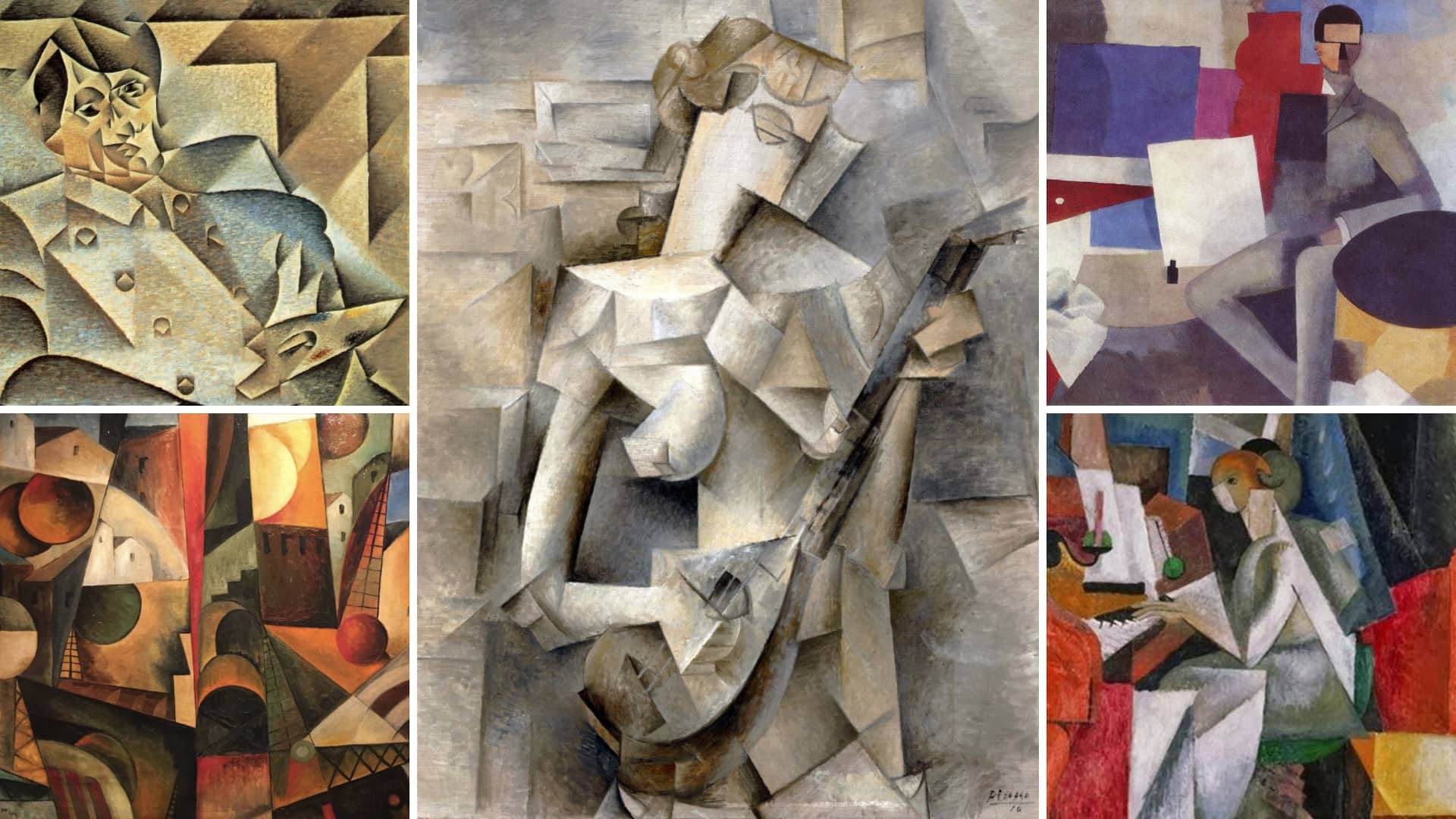Cubism is one of the most revolutionary art movements of the twentieth century. Its influence reaches across artistic mediums throughout history. What is cubism in art? In this article, we’ll dive deep into this question by analyzing the origins of cubist art, the artists who pioneered the artistic movement, as well as why the philosophy of cubism left a profound impact on art itself.
What is Cubism in Art?
First, let’s define cubism
Cubism can be a rather large subject to tackle, let alone to fully understand. The best place to start understanding the cubist art movement is with the cubism definition. For more, check out our index of art styles and our art history timeline covering more specific and noteworthy movements.
CUBISM DEFINITION
What is cubism in art?
Cubism is an influential art style defined by its revolutionary method of depicting three-dimensional reality through geometrical shapes on a two-dimensional canvas. Established around 1907 or 1908, cubist artists depict a subject by utilizing geometrical shapes and forms from varying perspectives of the subject. In practice, form, and observation, cubist art is a means of discovering the true essence of a subject rather than a surface level perspective. The term “Cubism” was coined by Louis Vauxcelles, a 20th century art critic. When writing a critique of artist Georges Braque’s landscape work, Vauxcelles identified geometric shapes and referred to them as “cubes.” While the term was supposed to be used as a negative critique, by 1911 “Cubism” was a popular term used by the public to describe the revolutionary artistic style.
Influential cubist artists:
- Pablo Picasso
- George Braques
- Jean Metzinger
- Paul Cézanne
Cubism Art History
When did Cubism become popular?
If Pablo Picasso, Jean Metzinger and George Braques are seen as the father’s of cubism, it could be argued that Paul Cézanne is its grandfather. Prior to Louis Vauxcelles' critique that is attributed for coining the term “cubism,” Cézanne was already creating cubist paintings that utilized varying perspectives as well as geometrical shapes.
Below is an example of Cézanne's work from 1895.
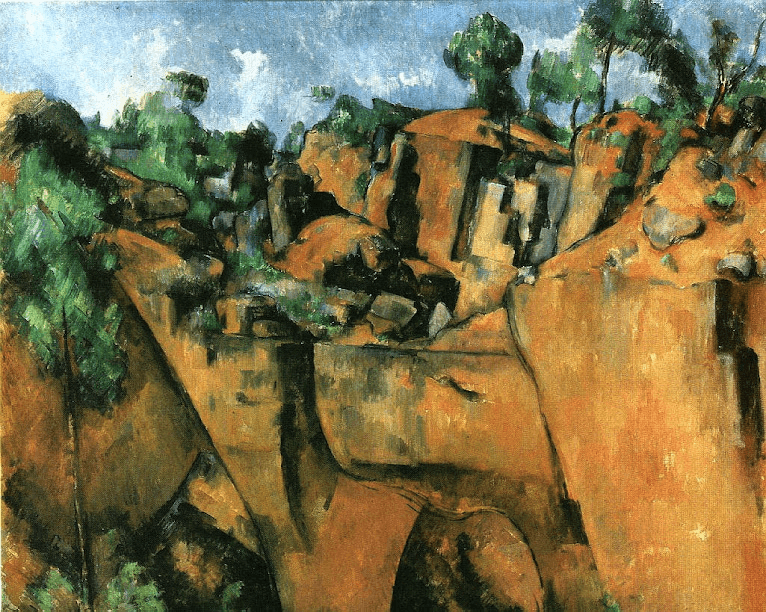
Cubism examples • Paul Cézanne, Bibemus Quarry, c.1895
Picasso, Braque, and Metzinger have all noted that Cézanne’s work profoundly influenced their own. While Cézanne provided a groundwork of inspiration, cubist artists took the style further by means of vast experimentation.
Pablo Picasso, for instance, took influence from highly stylised African tribal masks. He applied the non-naturalistic, often fractured styles to his own art. This in addition to his modern, Paris lifestyle greatly influenced Picasso’s cubist work.
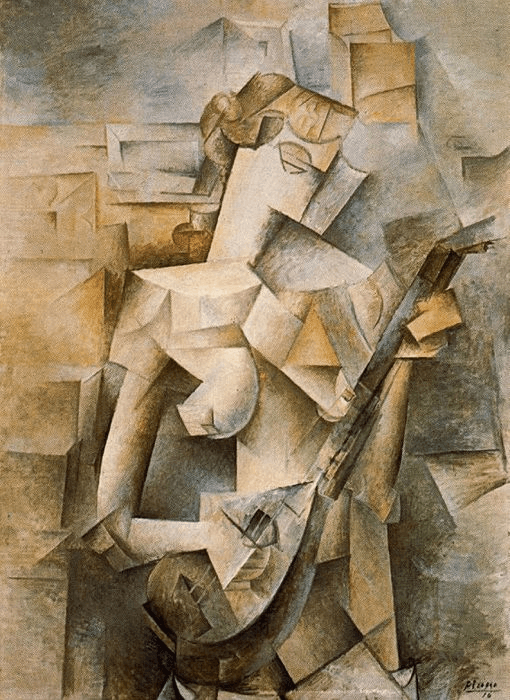
Cubism examples • Pablo Picasso, "Girl With Mandolin," 1910
Although Picasso was the leading pioneer to the Cubism art movement, he was not alone. His friend Georges Braque was also experimenting with geometric forms and varying perspectives in his artwork. Picasso and Braque met in Paris in 1907. Braque was visiting Picasso in his studio and the two traded ideas which blossomed into a friendship and in many ways, an artistic collaboration.
When discussing his relationship with Picasso later in his life, Braque would say, “The things that Picasso and I said to one another during those years will never be said again, and even if they were, no one would understand them anymore. It was like being roped together on a mountain.”
Braque and Picasso together developed the philosophy and artistic style behind the movement.
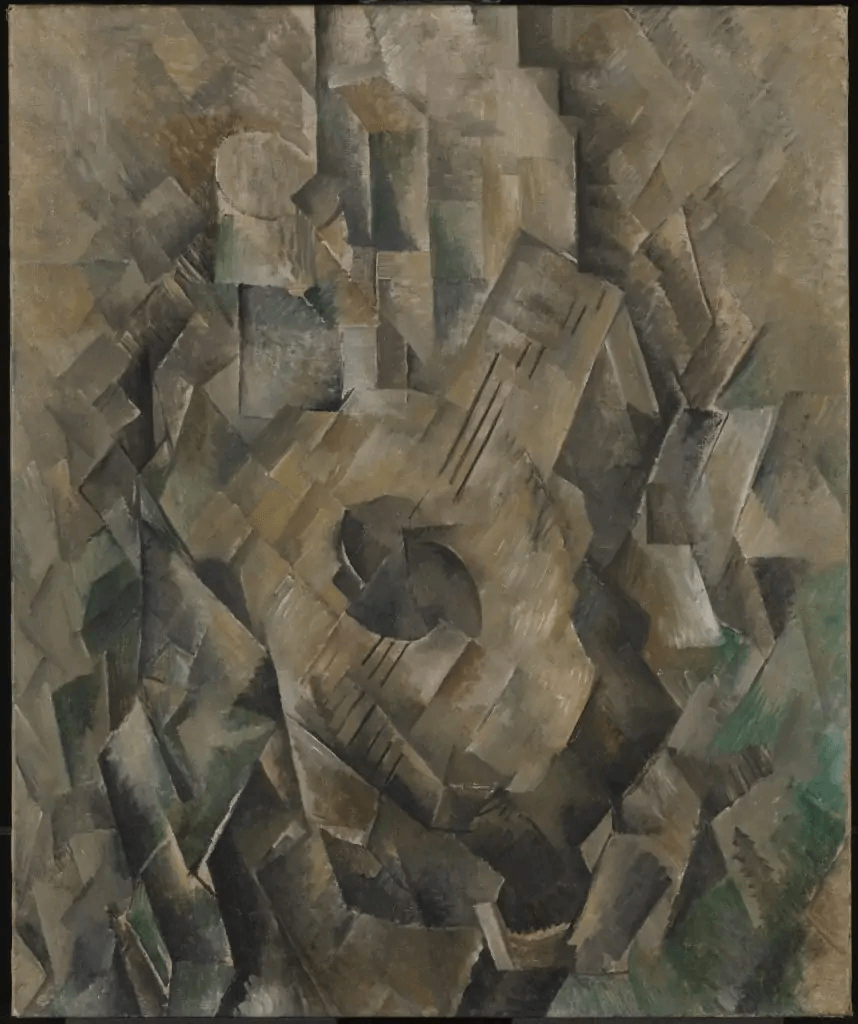
Georges Braque, Mandora, 1909-10
Braque’s Mandora (pictured above) is one of the more influential pieces to come out of the early days of the movement often referred to as the analytical cubism phase. What is analytical cubism? How does it differ from the later phase of synthetic cubism? Let’s find out.
Define Cubism Art Styles
Analytical and Synthetic Cubism
To fully understand the cubist movement, it is important to understand its two phases: analytical and synthetic.
Analytical cubism refers to the approach of creating a subject through geometrical shapes and depicting it in a flattened way.
Synthetic cubism is often recognized as a collage which utilizes other forms such as bits of a newspaper or other pieces to deepen the exploration and interpretation of a subject. The synthetic style utilizes words and even three-dimensional materials later known as assemblages (rather than sculptures).
While synthetic cubism allowed artists to more deeply explore a subject, it was often associated with the lower artistic status of advertising due to its use of text in the image.
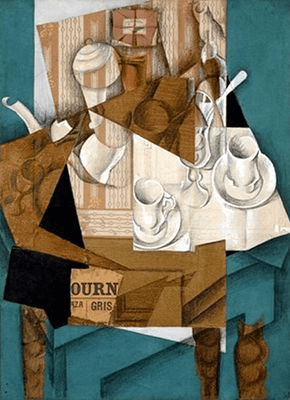
Juan Gris: Le Petit Déjeuner (Breakfast) (1914)
Analytical cubism art is often described as the more rigid or austere form compared to synthetic cubism. However, it is important to understand the level of experimentation that occurred during the movement.
Artists were less concerned with the appearance of a final work, but rather interested in the process of exploring a subject through cubism. Therefore, it is important to see synthetic cubism as an evolution of what came before through deeper experimentation.
To better understand how these iconic cubist artworks were created, it’s critical to understand the philosophical approach behind it.
Cubism Meaning
Understanding Cubism
The cubist movement was an exciting and revolutionary approach to creating art because of the doors it opened for both artists and viewers. Rather than depicting a subject according to spatial logic, cubist artists explore a subject through varying perspectives and vantage points to fully understand it.
Take a look at this video analysis of Pablo Picasso’s Night Fishing. Take note of how the method of cubism allows more depth to be depicted of the subject.
How To Understand A Picasso • Cubism Meaning
By exploring every possible angle of a subject, both the artist and the viewer can better discover that subject’s essence rather than its surface-level appearance. Cubism opened the doors to how artists can create an experience through their work rather than simply depicting a realistic form.
In creating and observing this type of artwork, artists and art lovers can better understand the world around them.
UP NEXT
Explore More Styles and Movements
This was just one of many fascinating segments of art history. There are many eras, styles, artists, and movements to discover. Let's continue our study by choosing the next stop on your way to becoming an art aficionado. Below you can visit our Art Styles Index, our Art History Timeline, or choose an individual movement.
Showcase your vision with elegant shot lists and storyboards.
Create robust and customizable shot lists. Upload images to make storyboards and slideshows.
